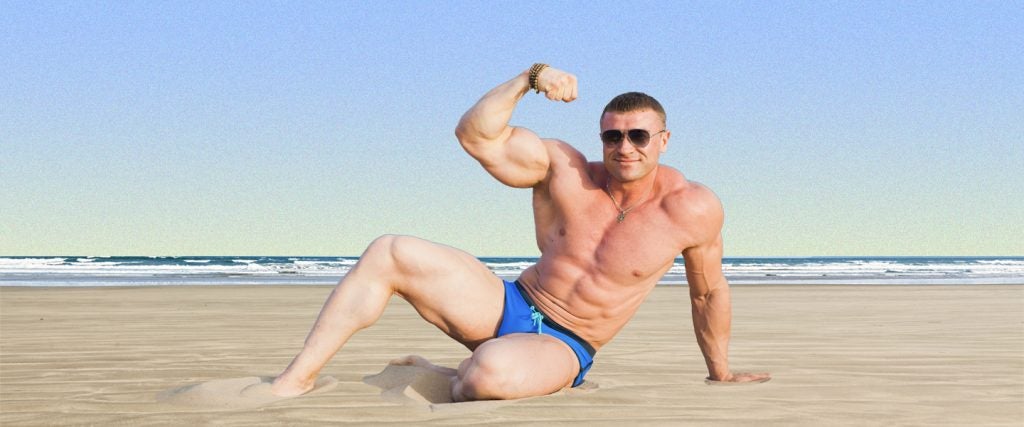At no point in my life have I ever had easy access to a beach that I could run on. Technically, I suppose I could have driven the 20 freeway minutes it takes to get to St. Clair Shores from where I grew up in suburban Detroit and found a beach there to run on, but that would have been a waste of time. For the majority of any year, the beaches of Michigan are like the beaches of London: Nobody wants to see them.
Instead, I gained my appreciation for the difficulty of running on sandy beaches from the mid-1990s hip-hop feud between LL Cool J and Canibus. In the midst of a questionable first single that escalated the beef with the Cool J That Ladies Love, Canibus contested his opponent’s claim to hardcore status within hip hop, dropping the line: “A hardcore artist is a dangerous man such as myself, trained to run 20 miles in soft sand!”
To punctuate his point, Canibus shot a music video depicting himself running on a sandy beach alongside Mike Tyson, similar to how Rocky Balboa sprinted on a sandy beach under the tutelage of Apollo Creed in Rocky III. It’s unknown whether or not Canibus traversed a full 20 miles during his sandy jaunt, but I remain skeptical.
Anyway, outside of the intersectional fantasyland created by feature films and hip-hop diss tracks, exactly how beneficial is it to run on sand?
Yeah, how much fitter can I get from running on the beach?
Let’s break this down into two categories: muscle engagement and energy expenditure.
The foremost study on the subject indicates that the human body performs 1.15 times more technical work running on sand than walking on sand. This may not sound like a lot, but keep in mind that, on average, walking on sand multiplies your workload by more than two times that of walking on a hard surface. (A possible reason for the bigger swing here — walking requires one foot to always remain in contact with the ground, whereas running is partially defined by the instances in which both feet are plainly in mid-air and are in no way touching the ground.)
This difference in engagement with each surface stems primarily from the fact that sand is an unstable surface. When it gives way beneath your feet, your leg muscles have to exert far more effort toward stabilizing your body. The more your feet interact with the sand, the greater the overall exertion that is required.
As a result of this technical workload increase, both walking and running on the beach necessitate the burning of larger quantities of calories. Beach running scorches an average of 1.6 times more calories than stable sidewalk/street running, while beach walking disposes of an average of 2.4 times more calories than walking on a hard surface.
That sounds awesome! I’m headed to the beach!
I’ll admit that your potential to experience a fat-incinerating beach workout sounds pretty rewarding, but don’t go putting on your sun visor and tanning oil just yet. Exercises that burn more calories also require more effort. While you may think that you’re going to run on the beach for an hour with the same ease you’d run along the road, then wipe off your brow, bank the overage in burned calories and call it a well-spent morning, things are rarely that easy.
The bleaker and more accurate scenario involves you running at a slow pace for 15 minutes, getting a cramp in your underutilized calf stabilizers and having to turn around and walk back. In the process of walking back through the sand, you worsen your cramps, thereby leading you to down a high-calorie Bahama Mama from the beach bar to deaden the pain, and resulting in you making the vow to never run on a beach again.
I’m not saying you shouldn’t make any attempts to run on the beach; I’m suggesting that you shouldn’t necessarily strive to transform the beach into your be-all-end-all training ground until you’re aware of the trade-offs and discomforts that accompany it. Simply because a workout comes wrapped in sunshine and sand doesn’t mean the idyllic scenery won’t bite you back.

